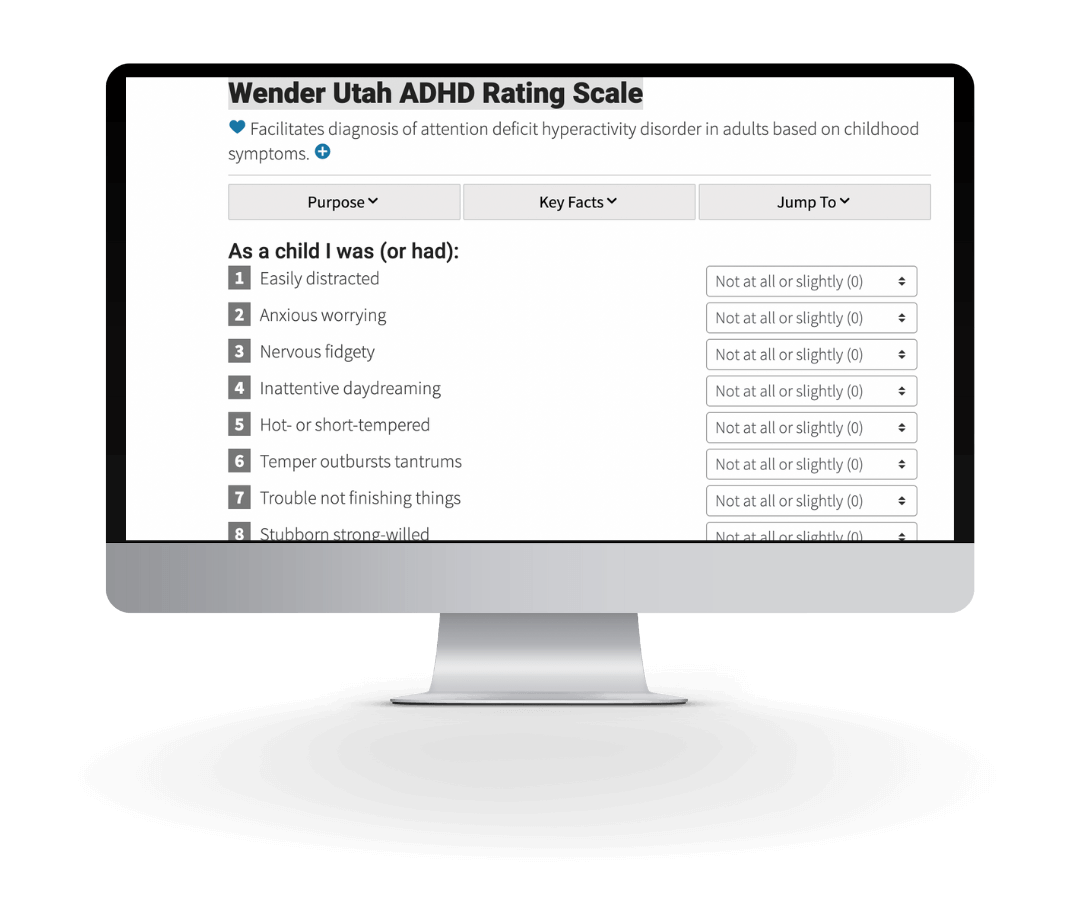
ADHD Screeners: A Review
As more and more neurodivergent people have started sharing their stories and lived experiences on social media, more adults are beginning to wonder if they may be undiagnosed ADHDers. This is particularly true among BIPoC, women, and genderqueer people whose ADHD is disproportionately missed during childhood. However, knowing where to turn to seek more information can be challenging. For many, online screeners can be one helpful data point that helps them along their journey of self-discovery and identification.
Online ADHD screeners can offer important data points in the self-discovery journey. Some may continue on to seek a formal assessment, while others will self-identify as ADHD. Whether seeking a formal diagnosis or self-discovery, online ADHD screeners can be a helpful part of the journey.
Disclaimer: One note about screeners. Screeners are intended as just one data point. For context, when I am making a formal diagnosis, I consider multiple data points across multiple contexts. Any screener or instrument should be seen as ONE data point and doesn’t quantify as a medical evaluation. This post is for educational purposes only and does not substitute for medical advice.
5 Free, Online ADHD Screeners
Following is a review of my five favorite screeners for ADHD. In addition to finding these personally useful, I also include several of these in formal assessments I complete.
The Adult ADHD Self-Report Scale ASRS (ASRS)

Pros: It’s easy to use and only takes one or two minutes to complete. It is highly sensitive, meaning it captures a high percentage of ADHDers.
Cons: It has moderate specificity (.71), meaning people with conditions other than ADHD (e.g., PTSD, anxiety, depression) may falsely screen positive.
Sensitivity refers to how often a person with the condition is missed. ASRS has a high sensitivity meaning it captures nearly everyone who has ADHD. Specificity refers to the instrument’s ability to distinguish ADHD from other conditions (i.e., will a person without ADHD screen positive). The ASRS has a moderate specificity (.71). This is a pretty good specificity, but it does mean some people who are not ADHD will score positive on this instrument.
Link: https://psychology-tools.com/test/adult-adhd-self-report-scale
Wender Utah ADHD Rating Scale (WURS)

The online version is an abbreviated version of the Wender Utah scale, and it measures ADHD traits present in childhood.
Pros: Captures childhood traits (demonstrating the presence of ADHD in childhood is necessary for diagnosis).
Cons: Many of the items focus on outward behavior. May miss high-masking ADHDers, ADHD-inattentive type, or ADHDers with anxiety who repressed impulsive/hyperactive instincts.
Link: https://www.mdapp.co/wender-utah-adhd-rating-scale-calculator-182/
Weiss Functional Impairment Rating Scale (WFIRS-S) – Self Report

The WFIRS captures the impact on functioning in six different domains that are often impacted in the context of ADHD.
Pros:
Helpful for capturing areas of needed support and the functional impact of ADHD.
The only functional impairment scale that looks at domains specific to the ADHD population.
It can be used throughout treatment to track progress and areas that would benefit from ongoing support.
Cons:
Cultural, Age Sensitivity, and Masking: This screener might not capture the full range of how ADHD affects people differently across cultures or at various ages. People with ADHD, who have learned to mask or hide their symptoms to blend in, might not fully disclose the extent of their challenges.
Interpretation, Accuracy Concerns, and Internalized ADHD: Understanding the results without a professional’s help can be tough. There’s a chance the scores won’t be accurate if people either downplay or exaggerate their symptoms. This is especially true for those with internalized ADHD, who may have had less external markers of ADHD in childhood.
The Barratt Impulsiveness Scale (BIS-11)

This is not specifically an ADHD screener. It measures different forms of impulsivity often present in ADHD-hyperactive and ADHD-combined types.
Pros: It breaks a person’s impulsivity down into three different areas (motor, self-control, and non-planning)
Cons: Helpful for measuring trait impulsivity but is not ADHD-specific.
Link: https://psytests.org/emotional/bis11en.html
***Trait impulsivity is observed in many populations, including ADHD and Bipolar populations. Nandagopal et al., 2011 found that BIS-11 scores were elevated among ADHD adolescents and adolescents with Bipolar. One distinction they found was that non-planning was higher among participants with bipolar but was not elevated among the ADHD population. Non-planning involves the ability to think about future consequences when making in-the-moment decisions.
Vanderbilt ADHD Diagnostic Rating Scale

The Vanderbilt is a parent report screener. Includes six different subscales:
ADHD-inattentive type
ADHD hyperactive/impulsive type
ADHD-combined type
Oppositional defiant disorder (ODD)
Conduct disorder
Anxiety/depression
Pros: A widely used screener for children aged 6-12. Useful as a parental screen and/or teacher screen.
Cons: This screener also screens for oppositional defiant disorder and conduct disorder. These diagnoses can be harmful and contribute to neurodivergent kids being misunderstood (particularly BIPOC ND children). PDA children are likely to have the ODD scale elevated.
Link: https://psychology-tools.com/test/vadrs-vanderbilt-adhd-diagnostic-rating-scale








